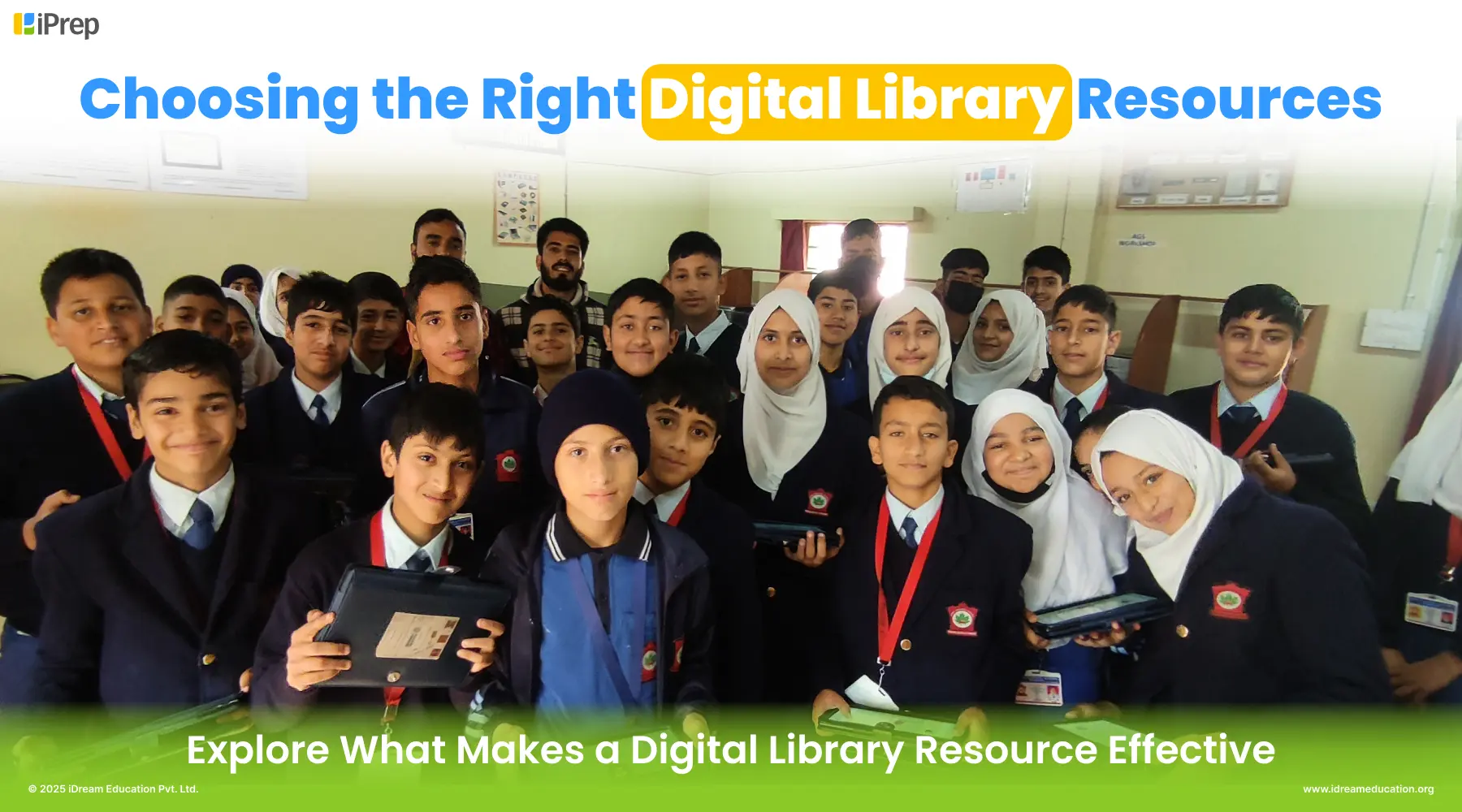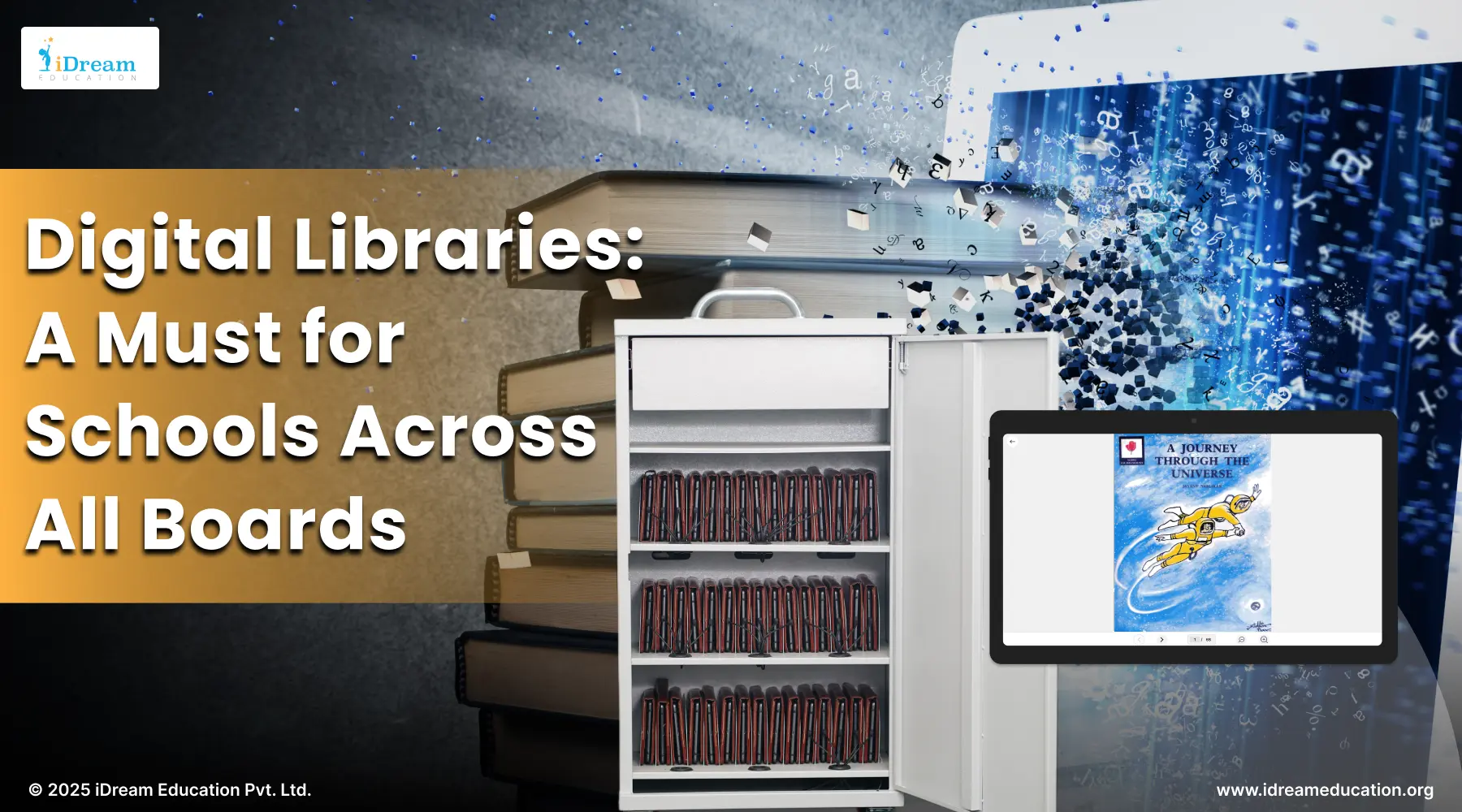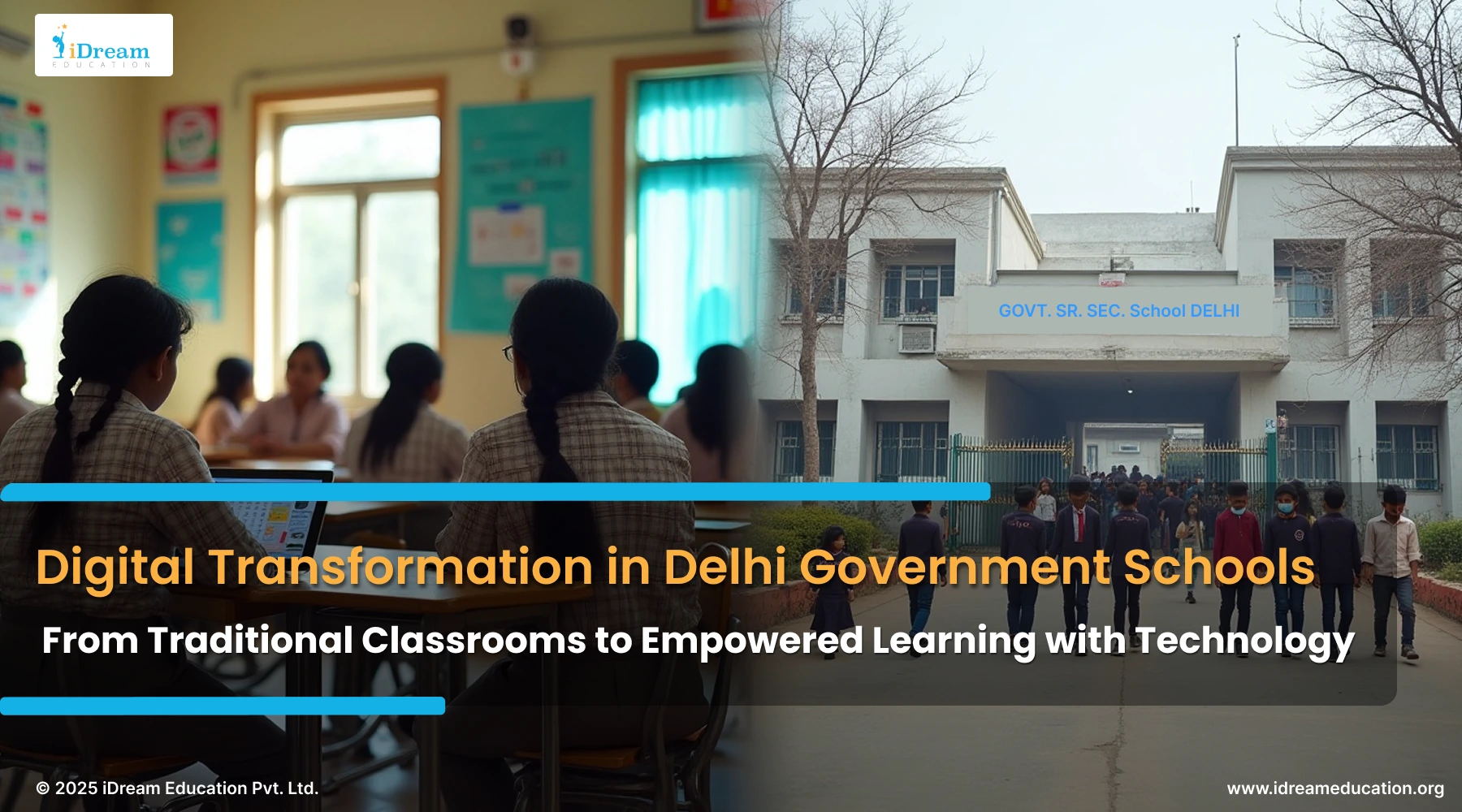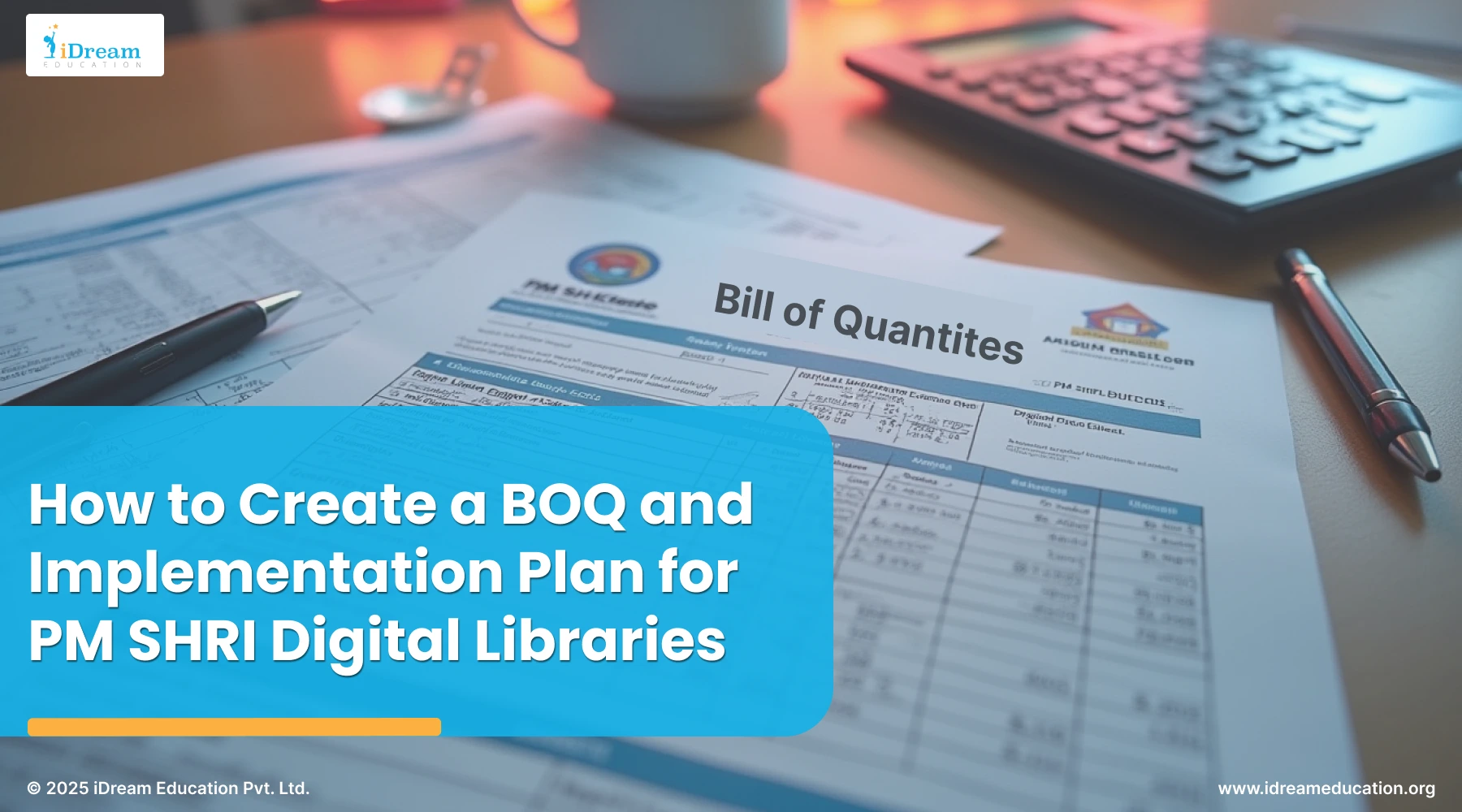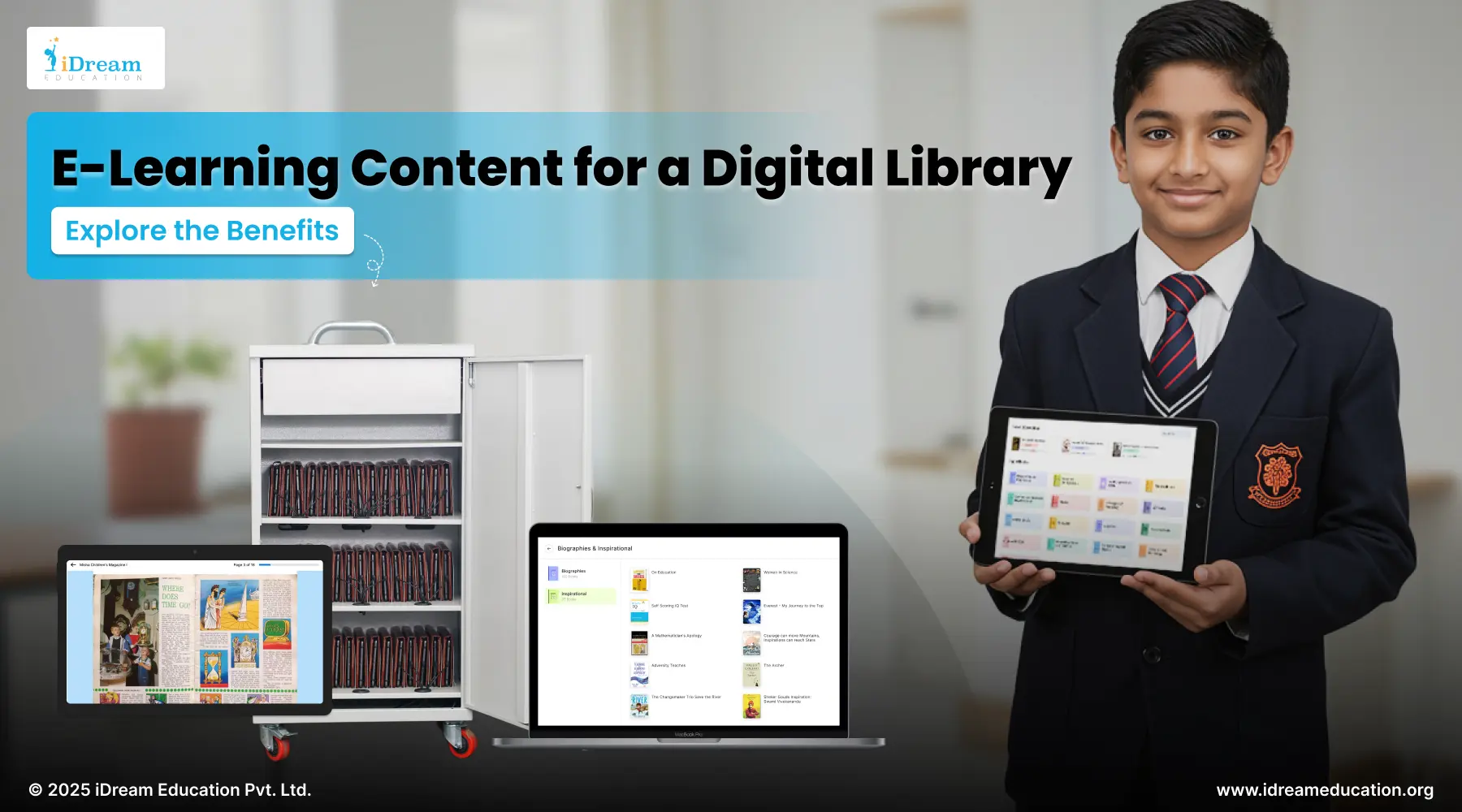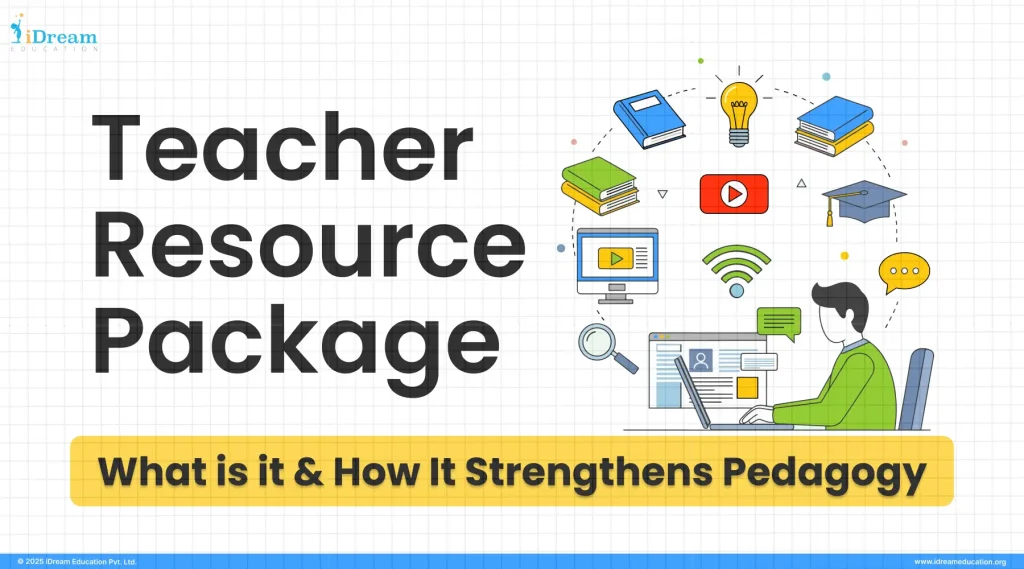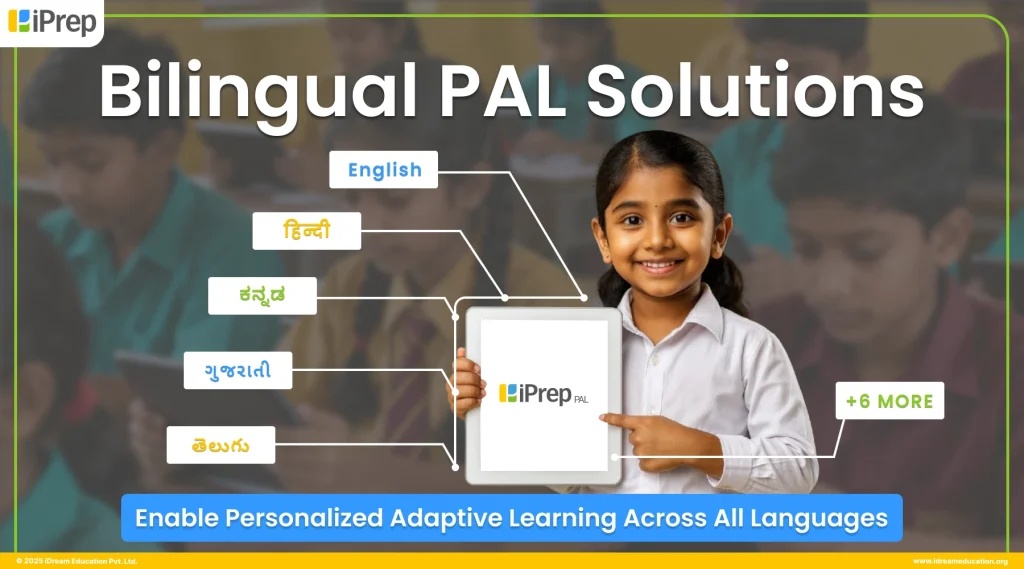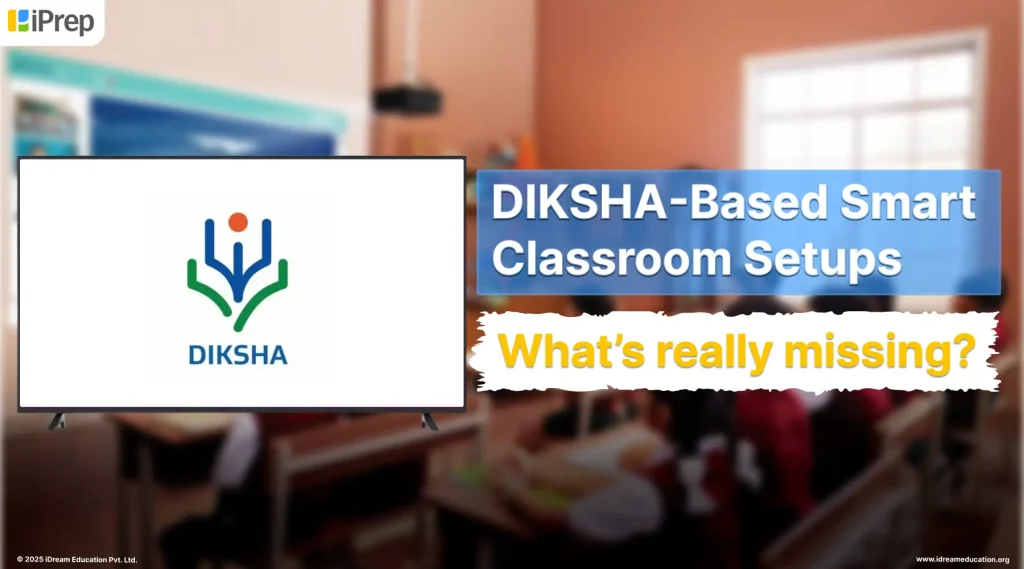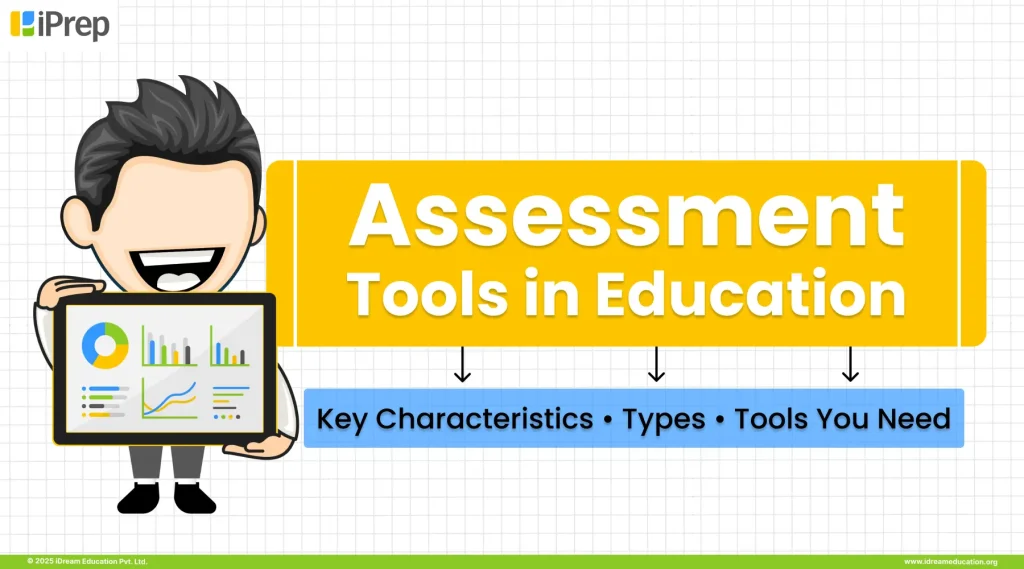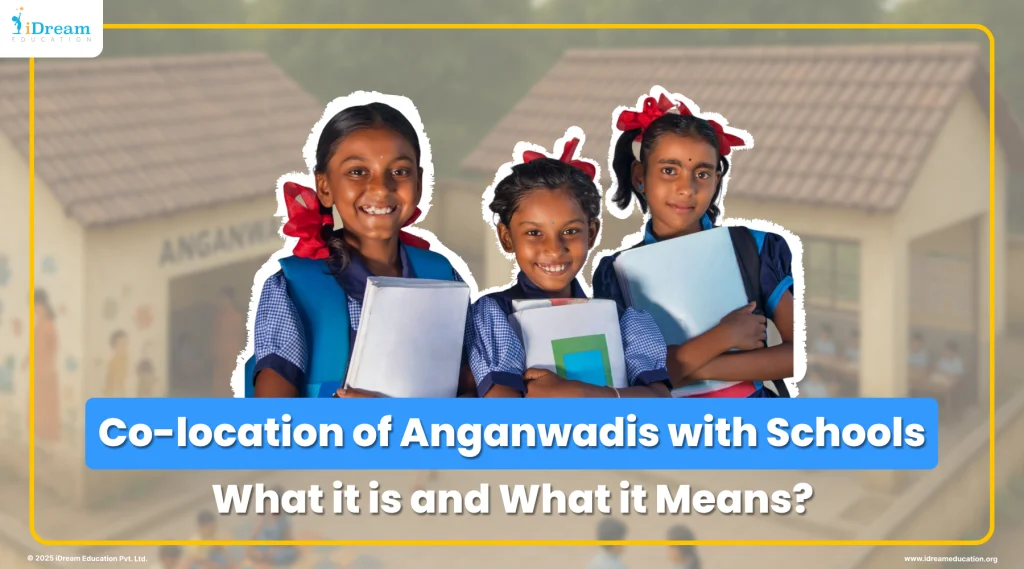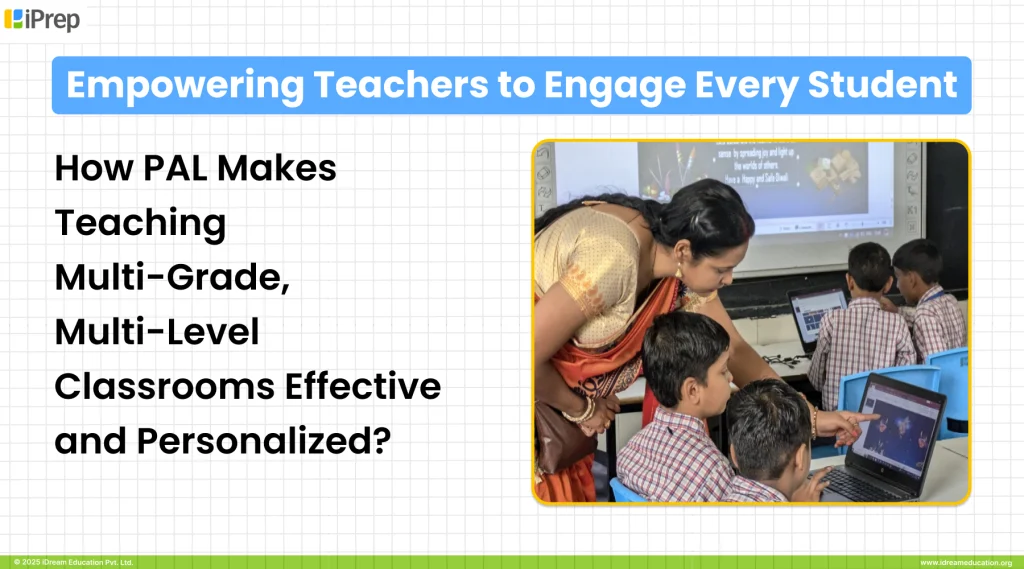Once the soul of every school, libraries now gather dust. Is reading dying or just waiting for a digital rebirth? As physical shelves fade from memory, digital libraries are rising. Let’s explore how digital libraries can revive the joy of reading in schools.
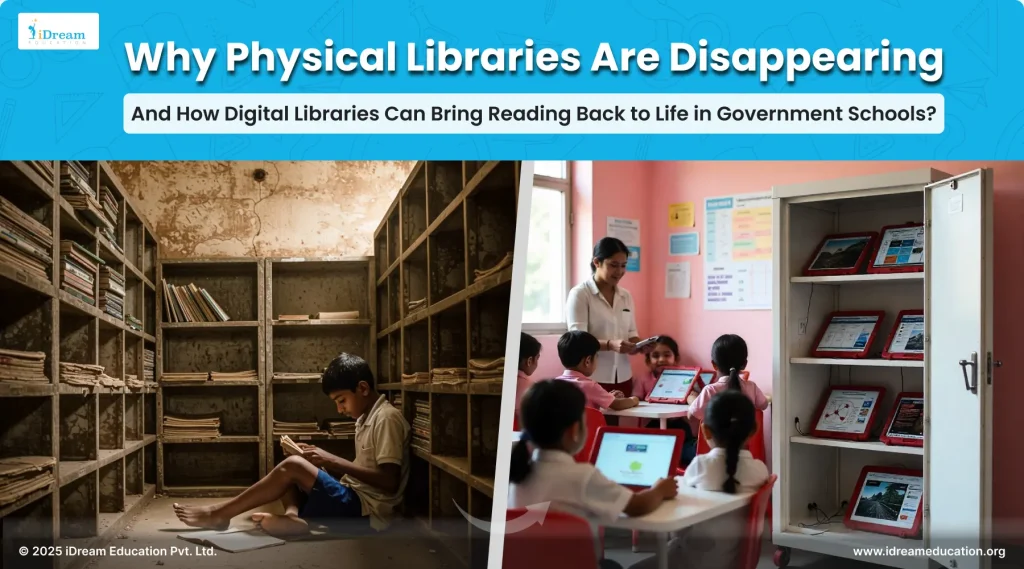
Historically, physical libraries in schools were once seen as essential spaces to nurture reading habits and open up the world of books to students. But over time, their presence and relevance, especially in government schools, has significantly declined. Many physical libraries in schools today are underutilized, poorly maintained, or in some cases, don’t exist at all.
There are several challenges of Physical libraries leading to fading
Physical libraries require infrastructure -space, furniture, proper lighting, and storage. They also need regular investment to keep books updated, add new books,manage catalogues, and ensure student engagement. In most schools, especially those in rural or semi-urban areas, these needs are rarely met. Either the books are outdated, too limited in number, or not aligned with the students’ interests or reading levels. Libraries, when available, are often treated as locked rooms, opened occasionally rather than being part of the daily school experience.
In government schools, the situation is more concerning. With limited budgets, high student-teacher ratios, and a strong focus on syllabus completion, the library often slips low on the priority list. Dedicated librarians are rare, and teachers already burdened with multiple responsibilities, finding it difficult to facilitate regular library periods. As a result, students are missing out on the chance to build a relationship with books outside their textbooks.
The fading of physical libraries has a direct impact on children’s reading habits
Without regular access to age-appropriate, updated, engaging material in preferred language, reading becomes a task rather than a joy. This not only affects language skills but also hampers imagination, curiosity, and critical thinking.
But does this mean we should give up on libraries? Absolutely not.
It means we need to rethink them. What if a library didn’t need four walls, dusty shelves, or a librarian? What if books could reach through screens they’re already familiar with? This is where Digital libraries for schools offer a strong possibility. These will not be a replacement for reading, but as a modern revival of it. Digital libraries can bridge the reading gap in ways physical infrastructure often cannot.
Let’s look at how digital libraries can become the new foundation for bringing reading back into the everyday learning journey
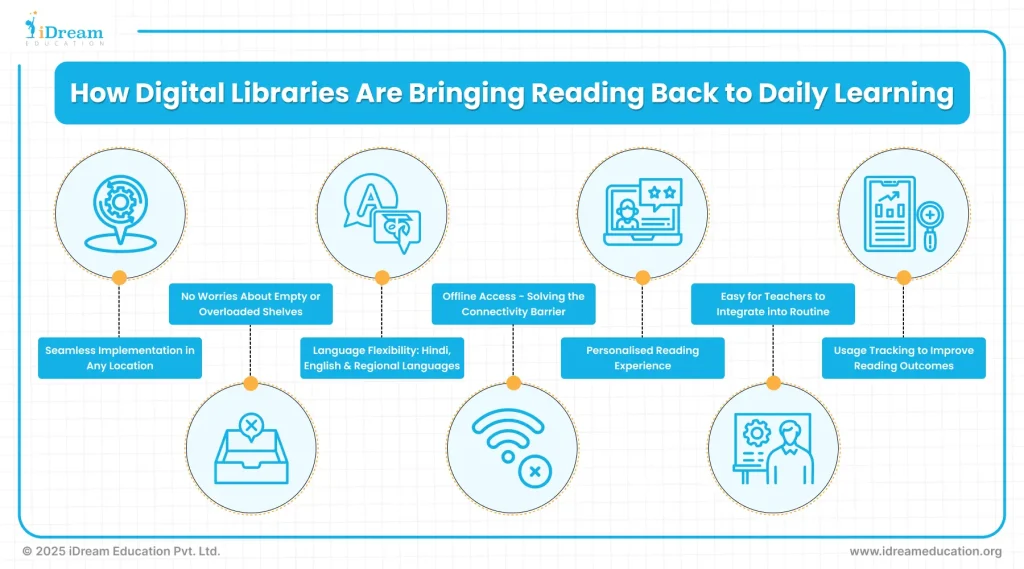
Seamless Implementation in Any Location
- One of the biggest strengths of digital libraries is that they can be set up in any government school, whether in a remote village or a city slum. Unlike physical libraries that require large spaces, furniture, and hundreds of physical books, a digital library can run on tablets, smart TVs, laptops, or chromebooks.
- With the right setup, even a single room or corner in the school can become a reading space. By using a local server or storage and charging rack, the digital library can be set up anywhere and run smoothly without needing constant upkeep or physical book management. This makes it ideal for government schools with limited space, budget, or staff. This gives students easy access to a wide range of books at their finder tips.
No Worries About Empty or Overloaded Shelves
- One of the biggest pain points in physical libraries is the limitation of physical books. Either there are too few books, or too many outdated ones. With digital libraries, there is no shelf space limit. Thousands of books can be stored digitally and accessed through a simple, child-friendly interface.
- This means students of different age groups, learning levels, and interests can all find books suited to them. This could be journals, biographies, stories, poems, or other educational resources.
Language Flexibility: Hindi, English & Regional Languages
- Students in government schools often come from diverse language backgrounds. Some are more comfortable reading in Hindi, some in English, and many in regional languages such as Marathi, Bengali, Telugu, or Kannada. A digital library makes it possible to offer books in multiple languages. This is something that’s rarely seen in traditional school libraries.
- When students can read in the language they understand best, they develop a stronger connection with reading. It also supports language learning where students can gradually move from regional languages to globally common language English, building confidence and comprehension step by step.
Offline Access – Solving the Connectivity Barrier
- A common myth is that digital libraries only work with internet access. But that’s not true. Today’s digital libraries are designed with government schools in mind. The best digital library vendor can provide completely offline access to books by providing preinstalled library lms and preloaded library content.
- These digital libraries can work without the internet on a day-to-day basis. They only need the internet periodically, maybe once a month or once a term. This is needed to sync the devices and update the content as per government educational goals. This solves a major challenge for rural and remote schools where internet access is limited or unreliable.
Personalised Reading Experience
- Unlike physical libraries where students pick whatever is available, digital libraries are enabled with LMS that show books based on grade and language preference, and learning needs. This helps students not just read more, but read better and what’s right for them.
- Such personalized reading pathways create better engagement. When students find books that match their interest and ability, they’re more likely to read willingly. Reading then becomes an enjoyable part of their daily learning, not just another classroom task.
Easy for Teachers to Integrate into Routine
- Digital libraries are not just for free reading time. They can be a part of classroom learning too. Teachers can use them during language periods, reading hours, or even for subject-based learning through relevant stories or informational texts.
- With proper training, teachers can encourage regular reading without needing to manage physical book logs or worry about missing books. You can also get content in digital libraries customized with books aligned to the school curriculum.
Usage Tracking to Improve Reading Outcomes
- Unlike physical libraries, where there is rarely any record of which books were read or how often they were used after issuing, digital libraries come with built-in usage reporting. The library LMS can track what students are reading, how much time they are spending, and which books are most engaging for different groups.
- This data can help teachers and school leaders understand students’ reading habits, identify students who may need support, and recommend books more effectively. For project administrators or managers, it offers a transparent view into how well the digital libraries are being used across schools. This makes it easier to track adoption, measure impact, and make data-driven decisions for expanding or improving the program.
Real change is best understood through real stories
Among the many stories we’ve seen during our work in government schools, one from Bhiwadi, Rajasthan, in 2017, continues to stay close to our hearts.
That year, we implemented a tablet-based digital library in a government school in Bhiwadi. Like in many such schools, students were excited, curious, and unsure of what to expect from this new setup. Among them was a quiet Class 7 girl named Nidhi. She was sitting at the back, listening carefully to the training sessions. She wasn’t the most vocal student in the room, but whenever she did speak, her questions showed a spark, genuine curiosity and a hunger to learn.
At that time, we didn’t realize, this was the beginning of something special.
A few months later, while reviewing usage reports from the digital library, one student’s reading activity stood out. Among all users, Nidhi had read an unusually high number of digital books. The usage was not just from her grade level, but from higher classes and across categories such as stories, poems, and general knowledge.
We decided to revisit the school, this time specifically to meet her.
In conversation, Nidhi shared how she had always loved books. Her mother had taught her alphabets and basic words using old, worn-out books at home. But growing up in a village without a physical library or access to new books, her reading journey had no place to grow. Buying books regularly wasn’t an option for her family either.
Everything changed when the school received a digital library on tablets. For the first time, Nidhi had access to hundreds of books at her fingertips, in Hindi and English, and suited to her age and beyond. She began reading regularly. Her interest and comprehension improved, her academic confidence grew, and she started exploring the world through words.
Nidhi’s story is a powerful reminder of why digital libraries matter, especially in government schools where physical infrastructure often falls short. She didn’t need a big library room. All she needed was access, and a screen that opened the door to stories, knowledge, and imagination.
You can also watch the video to hear her story in detail
As we reflect on stories such as Nidhi’s and the many realities of government schools across India, one thing becomes clear- access to reading should no longer depend on physical infrastructure alone.
The traditional model of physical libraries, while valuable, simply cannot keep up with the scale, diversity, and needs of today’s learners, especially in government schools.
- Digital libraries offer a practical, inclusive, and future-ready alternative. They break barriers of infrastructure, budget, connectivity, and language. They provide thousands of books in multiple languages, even without constant internet connectivity. And most importantly, they put the power of choice in students’ hands, allowing each child to explore, learn, and grow at their own pace.
- The impact goes beyond students. With usage reports, teachers and administrators can track adoption, identify gaps, and make informed decisions to improve outcomes. When implemented well, digital libraries not only bring reading back into schools, they help build a culture of learning that stays for life.
It’s time we revive reading in government schools
If you’re planning to set up Digital Libraries in government schools to revive reading habits, you may contact us at +91 7678265039. You can also write to us share@idreameducation.org or share your details here.
Frequently Asked Questions -
1. Why are physical libraries disappearing from schools, especially in rural and government settings?
Physical libraries require dedicated space, updated book collections, infrastructure, and trained staff — resources that many government and rural schools lack. Budget constraints, syllabus pressures, and outdated materials often push libraries to the margins, causing them to fall into under-utilization
2. How does the decline of physical libraries affect students' reading habits and learning?
The fading of physical libraries limits students’ access to diverse, age-appropriate books, which directly impacts their reading fluency, vocabulary development, and imagination. Without engaging reading materials, reading becomes a chore, not a habit - affecting language, comprehension, and critical thinking.
3. What are the main challenges in maintaining physical libraries in schools?
Maintaining a physical library involves challenges like space constraints, outdated book collections, lack of cataloguing systems, and absence of dedicated librarians. In under-resourced schools, these challenges result in libraries being locked or unused, depriving students of regular reading exposure.
4. How can digital libraries help revive the reading culture in schools?
Digital libraries offer anywhere access to a wide range of books in multiple languages and reading levels. They eliminate the need for physical infrastructure and can be integrated into existing digital devices, making reading more accessible, personalized, and engaging for students.
5. Are digital libraries a better alternative to physical libraries in today's school ecosystem?
Digital libraries are not a replacement but a necessary evolution. They align with students' digital habits, provide curated content based on reading levels, and can be updated regularly. Especially in schools lacking proper library infrastructure, digital libraries can reignite reading habits and foster lifelong learning.
6. How can digital libraries be implemented in remote or low-resource government schools?
Digital libraries can be set up using tablets, smart TVs, or laptops, requiring only a small corner of a classroom and basic digital infrastructure. They run smoothly even in rural schools using offline servers and preloaded content, making them ideal for areas with limited space, budget, or internet access.
7. What makes digital libraries better than traditional libraries in managing book collections?
Unlike physical libraries limited by shelf space, digital libraries can host thousands of books in one platform. They offer a child-friendly interface where students of all ages and levels can explore stories, poems, biographies, and academic content suited to their needs without worrying about outdated or missing books.
8. Do digital libraries support books in Hindi and other regional languages?
Yes, quality digital libraries offer multi-language support, including Hindi, English, and regional languages such as Marathi, Bengali, Kannada, and Telugu. This ensures that students can read in the language they are most comfortable with, helping build confidence and language skills simultaneously.
9. Can digital libraries work without internet connectivity?
Absolutely. Many school-focused digital libraries offer full offline access via preinstalled software and preloaded book content. They only require occasional internet (e.g., yearly) for updates or syncing making them perfectly suited for schools in remote or internet-poor regions.
10. How do digital libraries personalize the reading experience for students?
Digital libraries use an inbuilt LMS (Learning Management System) to recommend books based on a student’s grade level, language preference, and interests. This helps ensure students get age-appropriate, engaging content that suits their reading ability, encouraging more consistent and joyful reading habits.
11. Can school and project administrators track reading progress from digital library setup?
Yes. One of the biggest advantages of digital libraries is real-time usage tracking. Administrators and teachers can view data on what students are reading, time spent per book, and reading frequency. This helps identify engagement levels, support needs, and program impact, enabling informed decision-making.


